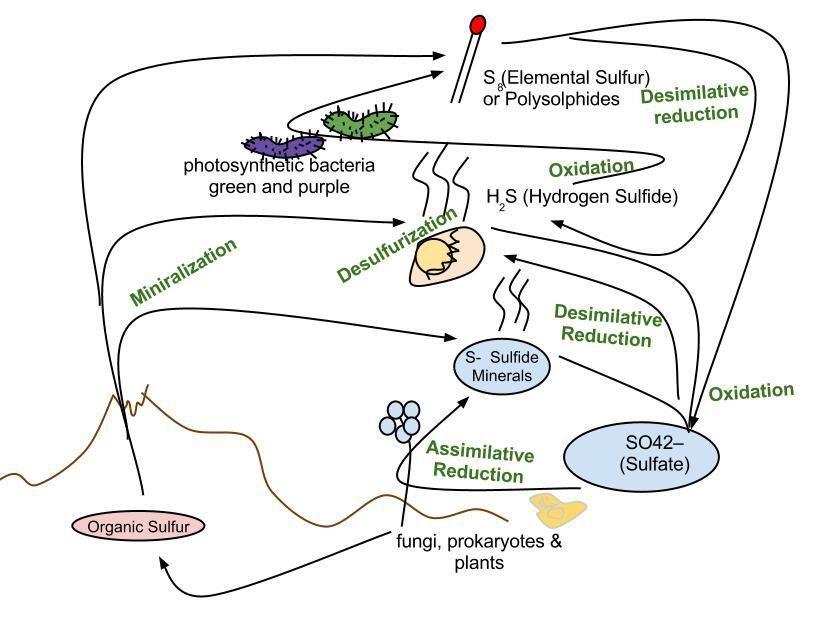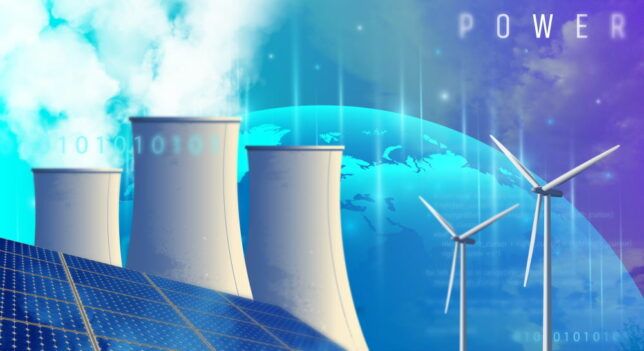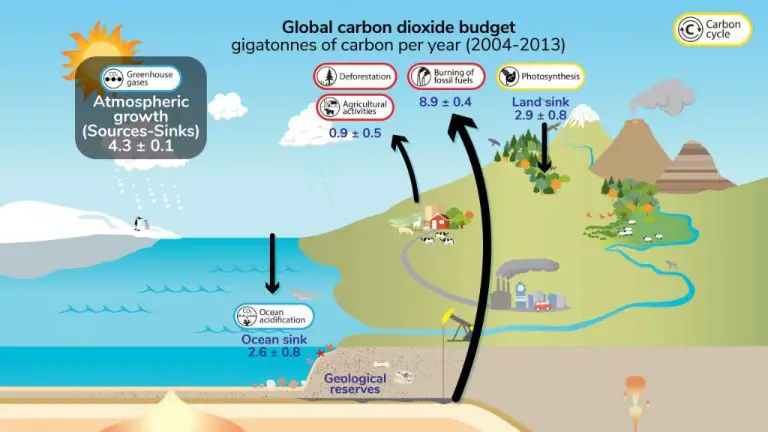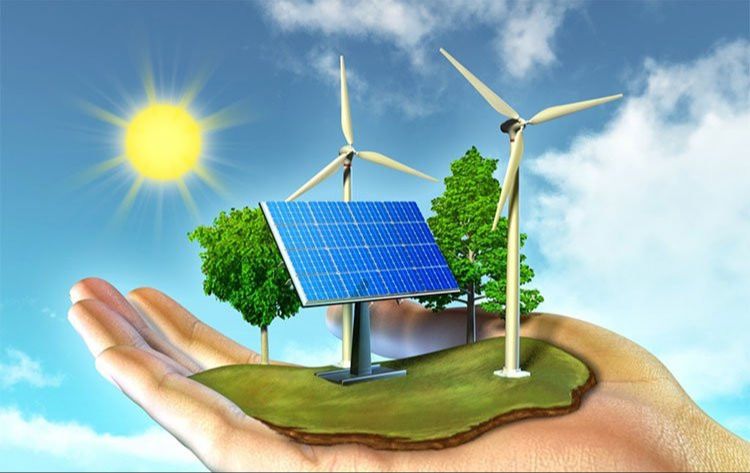What Is The Cycling Of Gasses?
Gas cycling refers to the constant movement and exchange of gases between the atmosphere, land, organisms, water, and the Earth’s crust. The gases that cycle through the Earth’s spheres include oxygen, carbon dioxide, nitrogen, and water vapor. Gas cycling maintains a balance of atmospheric gases that is essential for life on Earth. Photosynthesis by plants and algae produces oxygen that animals need to breathe, while respiration returns carbon dioxide to the atmosphere for plants to use. The nitrogen cycle converts atmospheric nitrogen into forms usable by living things. Gas cycling is a natural process, but human activities have significantly altered cycles of carbon, nitrogen, and other elements. Understanding gas cycling helps explain the composition of our atmosphere and how it changes. Gas cycling is crucial for environmental health and agricultural productivity. Disruptions to gas cycles contribute to issues like climate change, algal blooms, ocean acidification, and pollution. Sustaining the natural balance of atmospheric gases relies on reducing human impacts on elemental cycles.
The Carbon Cycle
Carbon is essential for all living organisms and is cycled through the biosphere, lithosphere, atmosphere, and hydrosphere in various forms. The carbon cycle regulates the movement of carbon between these spheres through processes like photosynthesis, cellular respiration, decomposition, combustion, and ocean-atmosphere exchange.
During photosynthesis, plants use the sun’s energy to convert carbon dioxide from the atmosphere and water into glucose sugars for growth. This process removes carbon dioxide from the atmosphere and converts it into organic carbon in the biosphere. Cellular respiration converts the stored organic carbon back into carbon dioxide which is released back into the atmosphere.
Decomposition of dead organic matter like plants and animals by decomposers like bacteria and fungi releases carbon dioxide back into the atmosphere. Combustion of organic fuels like wood, oil, and coal also releases carbon dioxide. The ocean acts as a major carbon sink, absorbing and storing carbon dioxide from the atmosphere. Exchange of carbon dioxide happens between the ocean and atmosphere – the ocean absorbs it from the air and releases it back by surface water mixing with deeper layers.
These processes work together to circulate carbon through the different spheres and allow the continued survival of life on Earth. Any disruptions to the carbon cycle can impact the global climate and ecosystems.
The Nitrogen Cycle
Nitrogen is an essential nutrient required by all living organisms to build proteins, DNA, and other important biomolecules. The nitrogen cycle describes how nitrogen moves through the atmosphere, lithosphere, hydrosphere, and biosphere in various chemical forms.
There are five main processes in the nitrogen cycle:
Nitrogen Fixation
Nitrogen fixation converts inert nitrogen gas (N2) in the atmosphere into forms usable by living organisms, primarily ammonia (NH3) and ammonium (NH4+). This can occur through industrial fertilizer production, combustion, and biologically through specialized bacteria that live in symbiotic relationships with plants or freely in the soil.
Assimilation
Assimilation occurs when plants absorb ammonium and nitrate, incorporate the nitrogen into organic compounds like amino acids, and pass those compounds along the food chain. Animals obtain nitrogen by eating plants or other animals.
Ammonification
Ammonification converts organic nitrogen from dead plants and animals back into ammonium (NH4+) through decomposition by bacteria and fungi. This ammonium is again usable for plants.
Nitrification
Nitrification is a two-step process where nitrifying bacteria convert ammonium into nitrite (NO2-) and then into nitrate (NO3-). Nitrate is a critical source of nitrogen for plants.
Denitrification
Denitrification occurs when denitrifying bacteria convert nitrate (NO3-) back into nitrogen gas (N2), allowing it to return to the atmosphere and completing the cycle. This primarily happens in wet, oxygen-depleted environments like wetlands.
The Oxygen Cycle
The oxygen cycle describes the movement of oxygen atoms between living organisms, the atmosphere, oceans, and geological systems. Oxygen makes up around 21% of the Earth’s atmosphere and is essential for most life. There are four main processes involved in the oxygen cycle:
Photosynthesis
During photosynthesis, plants absorb carbon dioxide and water and use sunlight to convert them into glucose sugars and oxygen. The oxygen is released as a waste product. Photosynthesis produces the vast majority of oxygen in the atmosphere.
Cellular Respiration
Cellular respiration is the opposite of photosynthesis. All living organisms, including plants and animals, break down glucose and oxygen during respiration to produce energy, water, and carbon dioxide.
Combustion
Combustion or burning also consumes oxygen and produces carbon dioxide. Wildfires, man-made fires, burning of fossil fuels, and oxidation reactions consume oxygen.
Atmospheric Processes
In the upper atmosphere, UV radiation from the sun splits oxygen molecules into individual oxygen atoms. These atoms can recombine to form ozone, providing an important UV radiation shield. Other atmospheric processes redistribute and recirculate oxygen.
Through this balance of photosynthesis, respiration, combustion, and atmospheric processes, the total amount of oxygen in the biosphere remains relatively stable over long time periods.
The Phosphorus Cycle
Phosphorus is an essential nutrient for all life on Earth. Unlike carbon or nitrogen, there is no gaseous form of phosphorus. The phosphorus cycle describes the movement of phosphorus through the biosphere, lithosphere, hydrosphere, and atmosphere.
Phosphorus enters the environment from rocks through weathering and leaching. Weathering wears down rocks over time, releasing mineral forms of phosphorus. Leaching dissolves phosphorus minerals and transports them in water. Phosphorus is then taken up by plants and incorporated into biological tissue. Herbivores obtain phosphorus by eating plants, while carnivores obtain it by eating herbivores. The phosphorus is incorporated into their tissues and passed along the food chain.
When organisms die, phosphorus is released back into the environment during decomposition by detritivores and microbes. Much of this phosphorus is reused immediately by plants and bacteria. Any excess phosphorus can bind to soil particles through a process called sorption. Over long time periods, accumulated soil phosphorus can dissolve into groundwater through leaching and end up in lakes, rivers, and oceans via runoff and erosion. This phosphorus is not readily available until geological uplifting exposes the sedimentary rock and the phosphorus cycle begins anew.
The Sulfur Cycle
The sulfur cycle is the biogeochemical cycle that describes the transformations of sulfur in nature. Sulfur cycles through rocks, water, soil and the atmosphere in various chemical forms. There are several key processes in the sulfur cycle:
Mineralization
Mineralization involves the conversion of organic sulfur compounds in decaying matter back into inorganic sulfate compounds. This process releases sulfur from organic matter in the biosphere back into the geosphere and atmosphere. Sulfate minerals occur in rocks or dissolve in water. Decomposers like fungi and bacteria help break down dead organisms and release inorganic sulfur.
Bacterial processes

Bacteria play an important role in sulfur cycling through processes like sulfur oxidation and reduction. Sulfur-oxidizing bacteria gain energy by oxidizing reduced sulfur compounds into sulfate. Sulfate-reducing bacteria do the opposite, reducing sulfate to hydrogen sulfide using organic matter or hydrogen as an electron donor. These processes influence sulfur forms in soil, marine sediment and wetlands.
Volcanic activity
Volcanic eruptions and geothermal vents release large amounts of sulfur gases like sulfur dioxide and hydrogen sulfide from the Earth’s interior into the atmosphere. This geologic activity injects reduced sulfur compounds into the atmosphere, which can then undergo oxidation. Volcanic eruptions are a major natural source of atmospheric sulfur.
Effects of Human Activity
Human activity has profoundly impacted the natural cycling of gases, disrupting the delicate balance of emissions and absorption. The three major areas of human impact are fossil fuel emissions, agricultural practices, and land use changes.
The burning of fossil fuels like coal, oil, and natural gas releases large amounts of carbon dioxide, methane, and other greenhouse gases. Since the Industrial Revolution began in the mid-1700s, fossil fuel emissions have skyrocketed. This has led to an overall increase in greenhouse gases and changes to the carbon and nitrogen cycles.
Modern agricultural practices also emit significant amounts of greenhouse gases through activities like biomass burning, synthetic fertilizer use, flooded rice paddies, and livestock. The widespread use of nitrogen fertilizers can cause nutrient loading in waterways and soil acidification. Deforestation for farmland leads to less carbon storage on land.
Land use changes such as deforestation, urbanization, and wetland conversion also impact gas cycling. Forests naturally absorb and store carbon through photosynthesis. When they are cleared, this carbon storage capacity is lost, and additional emissions may be released from soils and biomass. The conversion of wetlands to agriculture or urban areas removes a key methanotrophic ecosystem.
In summary, human activity across industries is accelerating the emission of greenhouse gases and altering natural gas cycling. Addressing fossil fuel dependence, unsustainable agriculture, and ecosystem conversion will be critical to mitigating human impact.
Importance of Gas Cycling
Gas cycling plays a vital role in maintaining a stable climate and healthy ecosystems on Earth. Here are some of the key reasons why gas cycles matter:
Climate Regulation
The cycling of gases like carbon dioxide, methane and water vapor regulate Earth’s greenhouse effect and global temperatures. For example, the carbon cycle regulates how much heat-trapping CO2 accumulates in the atmosphere versus being stored in oceans and sediments. Any major imbalances in these cycles can alter climate patterns across the planet.
Fertility of Ecosystems
The nitrogen, phosphorus and sulfur cycles are essential for recycling nutrients and fertilizing soils and oceans. This allows plants and phytoplankton to grow, which in turn sustains the entire food chain. Disruptions to these cycles can damage ecosystems by creating too much or too little fertility.
Health of Organisms
The oxygen and carbon dioxide cycles are critical for cellular respiration in animals, plants and other organisms. The cycling of these gases provides a continual atmospheric supply of O2 for breathing and CO2 for photosynthesis. Imbalances can make air quality hazardous and disrupt the biological processes organisms rely on.
Threats to Gas Cycles
The cycling of gases around the planet is being impacted by several factors caused by human activity. Some of the main threats to gas cycles include:
Climate Change
Earth’s temperature is rising due to increasing amounts of greenhouse gases like carbon dioxide and methane. This climate change has many impacts on the cycling of gases. Higher temperatures are causing increased rates of carbon and nitrogen release from the soil. The changing climate is also altering natural processes like photosynthesis and ocean circulation patterns which impact gas cycles.
Pollution
Air pollution from the burning of fossil fuels releases large amounts of carbon dioxide into the atmosphere. Water pollution from factory and agricultural runoff can increase the levels of nitrogen and phosphorus in waterways. This pollution disrupts the natural cycling of these nutrients.
Habitat Loss
Deforestation, draining of wetlands, overfishing, and other forms of habitat loss impact the ability of ecosystems to regulate gas cycles effectively. For example, cutting down forests reduces the rate of carbon absorption from the atmosphere. Habitat loss threatens many key organisms that enable the cycling of gases like nitrogen-fixing bacteria.
Protecting and restoring natural ecosystems is crucial for allowing the proper cycling of gases that all life depends on. Steps must be taken to reduce human impacts that are disrupting these important natural processes.
Conclusions
Gas cycling is essential for maintaining a stable and habitable planet. This article has explored the major biogeochemical cycles that circulate critical gases like carbon, nitrogen, oxygen, phosphorus, and sulfur. A delicate balance exists within each cycle. Disrupting that balance through human activities like burning fossil fuels, deforestation, and industrial farming can have wide-ranging impacts on ecosystems and life on Earth.
Understanding how these elemental cycles work reminds us of the interconnectedness of living systems. We see how the atmosphere, biosphere, lithosphere, and hydrosphere interact to regulate climate, facilitate nutrient flows, and make our planet livable. As the dominant species, humans have a responsibility to steward these natural cycles. Through sustainable actions like reducing greenhouse gases, conserving forests, and practicing regenerative agriculture, we can maintain the gas cycling that all life relies upon.
Moving forward, additional research and advocacy is needed to further illuminate gas cycling dynamics and inspire conservation. Education and policy changes must progress hand-in-hand. With care and wisdom, humans can continue benefiting from the services gas cycling provides for generations to come.





